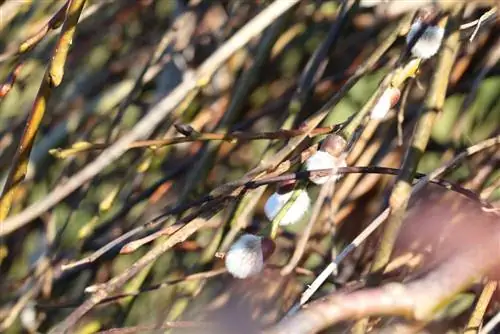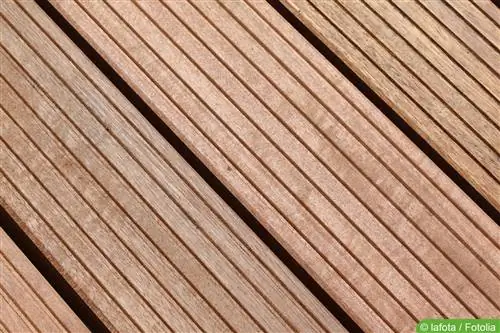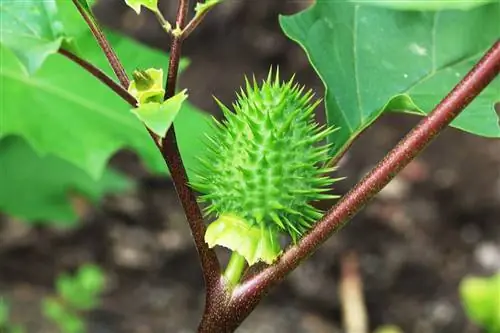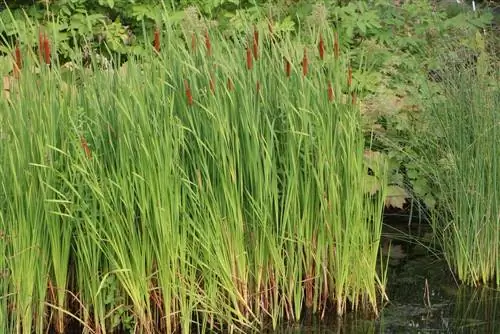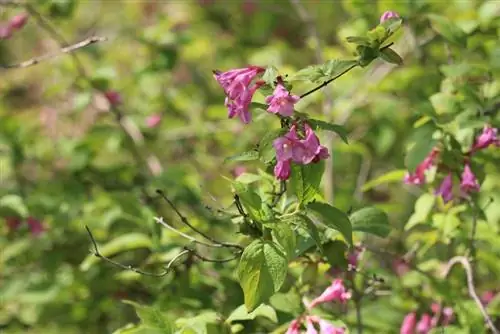- Author admin [email protected].
- Public 2023-12-17 03:39.
- Last modified 2025-01-24 12:45.
The catkin willow is not only popular with humans because of its fluffy flowers. Thanks to its early flowering, the pussy willow is considered the first source of food for bees and bumblebees. Because of this, the popular willow catkins are also protected and are therefore not allowed to be picked in the wild. However, the catkins can be cultivated and even propagated relatively easily both in the home garden and in pots.
Location
The pussy willow can be grown in the middle of the lawn or as a privacy or windbreak. However, if it is cultivated next to its own kind, there should be enough space so that the plants do not hinder each other's growth. This requires a planting distance that corresponds to approximately half of their growth width. The pussy willow, however, has only low demands on the location:
- sunny to partially shaded
- at least 4 hours of sunlight per day
- If there is not enough sun, the flowers will not bloom
- tolerates damp locations
- is therefore ideal for pond edging
Soil/Substrate
When it comes to choosing the soil, the pussy willow is relatively undemanding, as is the location, which is why it grows in a wide variety of places in nature. Both conventional potting soil and high-quality planting or potting soil are suitable for cultivating in pots. It is important that the substrate has a high water storage capacity and at the same time can release water easily to the roots. If the pussy willow is grown in the home garden, the following conditions should be taken into account:
- Soil can be both acidic and basic
- However, alkaline to slightly acidic is ideal
- optimal pH value: 4.5-7.8
- if not, the trees will remain a little smaller
- Soil not too calcareous
- loamy soil is best
- because this one is moist and sour
Tip:
If the garden soil is too dry and/or crumbly, it can be optimized for growing pussy willows. All you need to do is mix some clay into the soil.
Pots
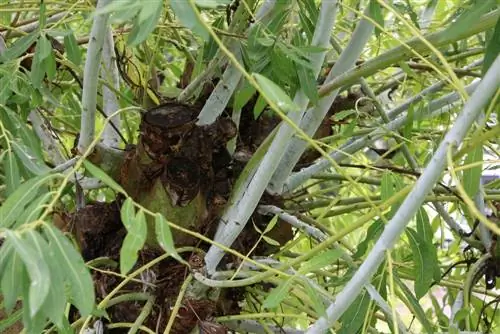
You don't need a large garden to grow the pussy willow, as the plant can be ideally cultivated in a pot. If you want to decorate your balcony or terrace with the signs of spring, it is best to use containers with the following properties:
- A clay pot is ideal
- because it can store moisture well
- Pot size at least 40 liters
- Work drainage into the bottom of the pot
- for example made of gravel or pottery shards
Planting
The catkins are usually sold as bare-root shrubs all year round and can therefore be planted all year round. Before planting, it is always advisable to immerse the catkin willow root ball in a bucket of water. The plant can then be used as follows:
- Dig planting hole
- ideally create a drainage,
- for example from gravel or pottery shards
- Insert plant carefully
- Fill planting hole with substrate
- Press the soil lightly
- final watering
Tip:
If the pussy willows are grown in a pot, it is advisable to check them around 30 minutes after watering. Because excess irrigation water often collects in the saucer and should be thrown away.
Fertilize
The pussy willows do not need to be fertilized regularly outdoors, but occasional fertilization with compost is extremely beneficial for them. The plants benefit from fertilizer release, especially in the spring after pruning. The cut plant parts are also ideal as mulching material, which additionally promotes the supply of nutrients. In addition, mulching protects the soil from drying out. Especially in the summer months, the pussy willows should be mulched regularly, with dry sandy soils primarily benefiting from this step. Anyone who cultivates the pussy willow in a pot should also pay attention to the following when fertilizing:
- ideal is a long-term fertilizer for green plants and shrubs
- alternatively, a liquid fertilizer can be used
- fertilize about every 30 days
- because nutrients run out faster in the bucket
- An intensive fertilizer is not suitable
- this causes the shoots to grow too quickly
- and they could go bald
Pouring
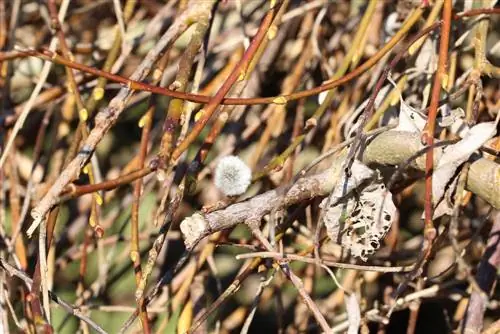
In general, the pussy willows prefer a moist surface, which is why a regular water supply should always be guaranteed. Catkins cultivated in pots in particular rely on continuous watering as the soil dries out much more quickly. In addition, the root system does not develop as strongly and can only absorb comparatively small amounts of water. No matter where the pussy willows are cultivated, it is important to take the following into account when watering:
- water with low-lime water
- rainwater is best
- Always keep the soil moist, but avoid waterlogging
- Soil should not dry out completely
- It's best to check for dryness with a thumb test
- To do this, insert your thumb into the substrate about 3-5 cm deep
Note:
If the pussy willow is not watered enough, its branches will droop.
Repotting
Since the pussy willows grow relatively quickly, they should be repotted into a larger container about every two to three years. On the one hand, this has the advantage that the roots have more space and can therefore develop better. On the other hand, repotting is a good idea to place the plants in fresh substrate. However, if the plant is not placed in a larger container, this will have a detrimental effect on its growth:
- Roots do not have enough space to grow
- and therefore remain small
- However, the plant continues to grow
- this creates an imbalance
- Roots cannot supply the plant with sufficient nutrients
Tip:
Repotting the pussy willows is just like inserting them.
Cutting
The pussy willows not only tolerate severe pruning particularly well, but also benefit enormously from it. Because of the annual pruning, the fresh shoots sprout particularly quickly and lushly. The best time for pruning is immediately after flowering, which usually takes place between March and April. As soon as the first pussy willows have formed, pruning can be carried out as follows:
- cut back deeply
- Cut off branches at the base
- at best leave stubs about the size of a fist
- with about 2-3 eyes
- fertilize afterwards
- A long-term fertilizer such as horn shavings is ideal
Tip:
Catkins grown in pots should be turned regularly after pruning so that they are evenly exposed to sunlight. However, if this care step is missed, the crown will develop unevenly.
Wintering

The catkin willow is generally considered hardy and can usually survive the winter outdoors without any problems. It is only advisable to protect the plants from frost when growing in pots. Because the roots in the planters are not covered in enough soil and therefore freeze more quickly. However, pussy willows cultivated in pots can be brought safely through the winter with simple steps:
- Do not place the pot directly on the ground
- but position on a surface
- A wooden or polystyrene plate is suitable for this
- then wrap the plant
- for example with bubble wrap
- A jute bag is also suitable
- ideally this is filled with leaves, straw or polystyrene
Tip:
Custom willows cultivated in pots continue to be watered regularly in winter, but outdoors only during prolonged drought.
Propagation with cuttings
Catkins are extremely easy to propagate with their cuttings. However, it is important to note that the shoots must not be cut off from wild-growing plants. Because the pussy willow is protected and cutting off the branches is therefore prohibited. However, if you cultivate the catkin willow in your home garden, you can take the cuttings from your plant in spring without any concerns. Alternatively, it is also possible to purchase the cuttings from specialist retailers. If the cuttings are available, there are two different methods for propagation:
- Place the cutting into the substrate
- about 10-15 cm deep
- Keep substrate moist
- Alternatively, you can also use the glass method
- the cutting is placed in a glass with water
- roots form after a few days
- the cutting can be used a few weeks later
Propagation with seeds
Propagation using cuttings is the most popular method, but pussy willows can also be grown by sowing. However, it is important to note that the seeds can only germinate for about two weeks. It is therefore advisable not to store the seeds, but to sow them relatively quickly as follows:
- Place seeds in seed tray
- fill with moist potting soil
- keep the substrate moist at all times
- after 24 hours the first seedlings appear
- these will be pricked
- and then placed outdoors or in a larger pot
Diseases
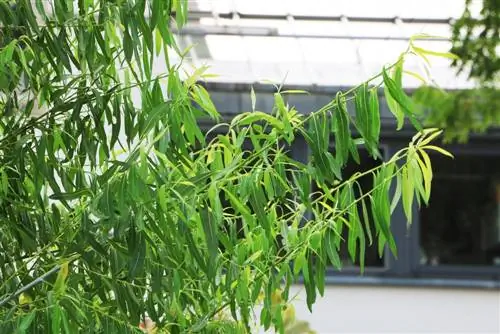
The pussy willow often falls ill with the willow rust fungus, which can be clearly recognized by red-orange spots/dots on the leaves. However, willow rust fungus can usually be easily treated with fungicides, although in some cases repeated treatment per year is necessary. The fungus can also be prevented by always removing falling leaves and ensuring that the plant is well supplied with nutrients. Apart from the willow rust fungus, the catkin willow often suffers from the following diseases:
- Powdery mildew
- Leaf spot disease
Pests
The willow borer in particular enjoys the catkin willow and can cause lasting damage to the plant. Over time, the caterpillars of the willow borer eat into the bark deep into the wood, which can even cause the plant to die. The infestation can be recognized by the typical smell of vinegar and feces as well as drill holes and chips. Affected plant parts must be removed and disposed of with household waste. In the early stages of an infestation, it is worth trying to combat it with quasia soap broth. However, if the infestation has progressed, combating it is almost hopeless. In addition to the willow borer, the pussy willow is also often attacked by the following pests:
- Aphids
- sawfly
- Web Moths

